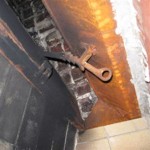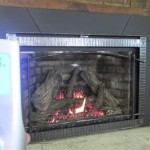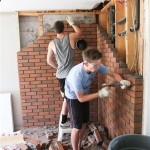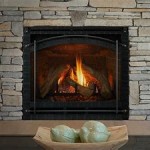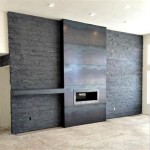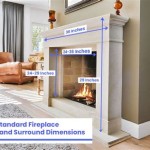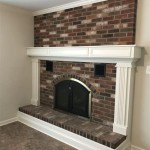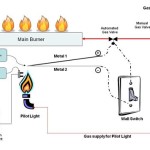Understanding Fireplace Duct Fans: Enhancing Home Heating Efficiency
Fireplace duct fans, also known as fireplace register boosters or fireplace heat distribution systems, represent a practical approach to improving the efficiency of wood-burning fireplaces. These devices, designed to circulate warm air generated by the fireplace, can significantly improve the overall heating of a home, reducing reliance on central heating systems and potentially lowering energy costs. This article will detail the functionality, benefits, and considerations associated with fireplace duct fans.
The primary function of a fireplace is to provide supplemental heating to a specific area, typically the room where the fireplace is located. However, a considerable amount of heat often escapes up the chimney, rendering the fireplace's heating capacity less effective. Furthermore, heat naturally rises, leading to uneven temperature distribution within a home. Fireplace duct fans address these issues by capturing and redirecting heat to other areas of the house.
These fans operate by drawing warm air from the fireplace's immediate vicinity, either through existing ductwork or by directly drawing air from above the fireplace opening. The captured air is then forced into the home's ventilation system or directly into adjacent rooms via flexible ducts. The efficacy of a fireplace duct fan hinges on several factors, including the design of the fireplace, the size of the space being heated, and the fan's power and airflow capacity. Understanding these factors is crucial to selecting the most suitable system for a given application.
Key Point 1: How Fireplace Duct Fans Operate
The operational mechanism of a fireplace duct fan varies depending on the specific design. Some systems are integrated directly into the fireplace insert or firebox itself, while others are installed as standalone units adjacent to the fireplace. Regardless of the configuration, the fundamental principle remains the same: to enhance heat distribution. A typical system utilizes a fan, powered by an electric motor, to draw air through a filter (in some models) and then propel it through ductwork to designated outlets.
The position of the fan within the system is critical. Some models feature fans located behind the fireplace, drawing air from the back wall, or above the firebox, capturing rising hot air. Others are designed as register boosters, which sit within existing floor or wall registers and pull warm air from the fireplace chamber and circulate it into the room or through the ductwork. These register boosters are particularly useful in bypassing the natural tendency of warm air to stratify at the ceiling level.
Many contemporary fireplace duct fan systems incorporate thermostatic controls. These controls automatically activate the fan when the fireplace reaches a specific temperature and deactivate it when the fire cools down, preventing the circulation of cold air. This automation ensures that the system operates efficiently and provides consistent heating without requiring manual intervention.
Key Point 2: Benefits of Using a Fireplace Duct Fan
The benefits of utilizing a fireplace duct fan extend beyond simply enhancing heat distribution. A primary advantage is increased heating efficiency. By diverting warm air from the fireplace to other rooms, the system reduces reliance on the central heating system. This can lead to significant energy savings, particularly during periods when the fireplace is used frequently.
Improved temperature consistency is another notable benefit. Without a duct fan, a home heated by a fireplace can experience significant temperature variations between rooms. A duct fan helps to equalize temperatures, creating a more comfortable and uniform living environment. This is especially beneficial in larger homes or those with multiple levels.
Moreover, a fireplace duct fan can contribute to a more aesthetically pleasing and safe fireplace environment. By actively drawing heat away from the immediate fireplace area, these systems can help to reduce the surface temperature of the surrounding walls and mantel, minimizing the risk of overheating or damage to sensitive materials. Additionally, some systems incorporate filtration, which can improve indoor air quality by removing dust and other particulate matter from the air circulating throughout the home.
Key Point 3: Considerations When Selecting and Installing a Fireplace Duct Fan
Selecting the appropriate fireplace duct fan requires careful consideration of several factors. The size and layout of the home are paramount. A smaller model may be sufficient for a small house or apartment, while a larger, more powerful system may be required for a larger home with multiple rooms or floors. The existing ductwork infrastructure also needs to be assessed. If the home already has a compatible ductwork system, integrating a duct fan is relatively straightforward. However, if no ductwork exists, installing a new system may require more extensive modifications.
The type of fireplace also plays a crucial role. Some fireplaces, such as those with inserts, are designed to readily accommodate duct fans. Others may require modifications or specialized adapters to ensure proper installation and functionality. It is essential to consult with a qualified HVAC technician or fireplace professional to determine the most appropriate system for a given fireplace type.
Noise levels and energy consumption are additional considerations. Some duct fans can be quite noisy, particularly at higher speeds. Look for models that are designed for quiet operation. Energy consumption is another factor, as the fan will be drawing power from the electrical grid. Select a model with an energy-efficient motor to minimize operating costs. Proper installation is also crucial to ensure optimal performance and safety. It is advisable to have a qualified professional install the system to ensure that it is properly connected and that all safety regulations are followed. This can help prevent potential hazards, such as overheating or electrical issues.

How Chimney Fans Work The Blog At Fireplacemall

Chimney Centrifugal Fan Vents Kam 150 Official Website

Chimney Centrifugal Fan Vents Kam 150 Official Website

Fireplace Systems Outdoor Masonry Brick Fireplaces Modular Burntech 818 564 4253

Chimney Exhaust Fan Install Prevent Fireplace Back Puffing

Chimney Fan Fireplace Barbecue Exhaust Draft Extractor Flue 110v

Chimney Exhaust Fan Install Prevent Fireplace Back Puffing

Fireplace Systems Outdoor Masonry Brick Fireplaces Modular Burntech 818 564 4253

Chimney Fans Exodraft And Flue Boost

Fireplace Systems Outdoor Masonry Brick Fireplaces Modular Burntech 818 564 4253
Related Posts

